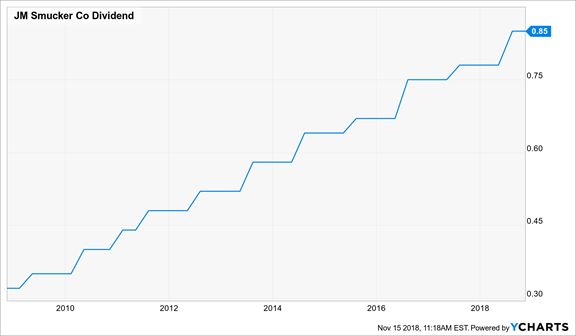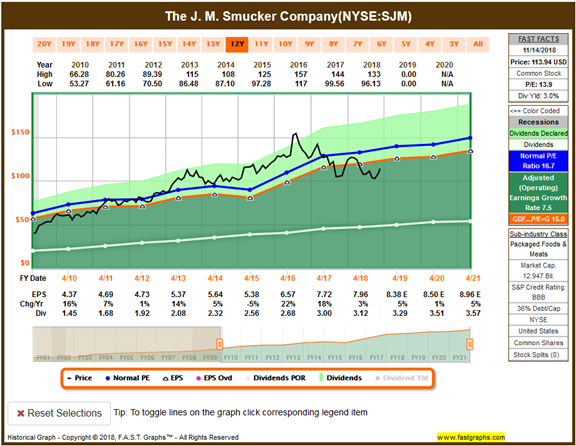Retirees seek reasonable, consistent yield without a threat to the nest egg. For the last three weeks I have revisited a method for doing this, one I first described six years ago.
The Quest for Yield (Part 6): Enhancing the Yield from Your Dividend Stocks, written in March 2012 explained the concept. While I have made a few changes, it is working as expected. I hope to write a series of posts describing and explaining some of our current choices and trades. While this is not investment advice for any specific reader, those who need to increase their yield may find it interesting. (More on this subject below).
Introduction
The program, simply described, consists of buying a good dividend stock and selling a call against the position. While there are many dividend programs and many covered call programs, there is a powerful synergy from putting them together. There is also skill in choosing suitable stocks and the right call to sell.
I began the series with IBM (NYSE:IBM), emphasizing criteria for finding suitable stocks. The next installment covered AT&T (NYSE:T), with an emphasis on the choice of which call to sell. Last week I discussed how to manage a position, using General Mills (NYSE:GIS) as an example. This week I will take up what happens when you lose your stock because the option is exercised. This happened to us yesterday in JM Smucker (SJM).
Choosing a Suitable Stock
The best stocks for this approach have the following characteristics:
- A reasonable dividend – 2.5% or more is fine.
- A good balance sheet.
- A reasonable payout ratio, providing confidence that the dividend can be maintained.
- Limited downside risk.
- A cheap stock on a P/E basis.
- Evidence of technical support.
We do not care about the immediate chances for an upside move. We do not care about the “organic” earnings growth versus share buybacks. We do not care if the stock is out of favor or boring.
We seek a safe platform for selling calls. Wherever someone sees a “value trap,” we see a candidate for this program.
Smucker Qualifications
Let’s start with the dividend history, a very impressive record.

For valuation, I use FAST Graphs to verify that the price is attractive. We made this trade on two different occasions. The price is good now and was even better when we made our trades.

History of the Trades
This investment included several different parts:
- The original covered call (9/19/17)
- Purchased stock at $110.10.
- Sold OCT 110 call for $1.99.
- Call expired worthless. (10/20/17)
- Sold DEC 100 call for $1.12. (10/24/17)
- Collected dividend of 78 cents (those who owned the stock before the ex-dividend date, 11/9/17)
- Call was assigned, stock sold at $110.
- New covered call position (10/2/18)
- Purchased stock at $103.17.
- Sold NOV 105 call for 2.40.
- Assigned on call, stock sold at 105. (11/14/18).
Here is the history in chart form.

In the first trade, we waited for a dip in the stock to get a good price. There was a further dip, so we collected $1.99 on the call which expired worthless. We now sold another call for $1.12. We then collected a dividend of 78 cents. At December expiration, the stock was above the 100 strike price, so we were assigned on our call. This means that the call owner exercised the right to buy the stock at the strike price of 110 when it was trading 115. In all, we made $1.99 + $1.12 + 0.78 and lost ten cents on the stock for a total of $3.79 in about three months, an annualized return of 13.7%.
In the second trade we bought stock at 102.55. and sold a NOV 105 call for $2.26. The stock would go ex-dividend on 11/14, with holders collecting 85 cents. By that time, the stock had moved to about 113, well above the strike price. The call holder exercised the call, becoming the holder of record and getting the dividend. We missed out on the dividend, but we collected $2.26 on the call and $2.45 on the gain in the stock (105-102.55). This is a total of $4.71 in about six weeks or an annualized gain of about 40%.
Terms and Concepts
We trade in “American” options, which permit exercise at any time before the option expires. Here is a good definition of exercise:
Exercise means to put into effect the right specified in a contract. In options trading, the option holder has the right, but not the obligation, to buy or sell the underlying instrument at a specified price on or before a specified date in the future. If the holder decides to buy or sell the underlying instrument (rather than allowing the contract to expire worthless or closing out the position), he or she will exercise the option, and make use of the right available in the contract.
If you have sold a call, as we are doing in the strategy described in this series, we have sold these exercise rights. That is why we collected a premium! When calls are exercised, those who are “short the call” are “assigned.”
Calls are exercised when the stock is trading above the strike price at the time of expiration. Until then, the option holder can enjoy the same exposure as owning the stock, but with much less risk.
Calls are exercised before expiration to collect a dividend. The option holder compares the remaining “premium” in the call – how much over parity it is trading. In general, if the dividend is greater than the premium it is right to exercise the call before expiration.
When does this happen? Before the stock goes ex-dividend. A company announcing a dividend on a record date; the dividend will be paid to holders of record on that date. Since stocks settle after two business days, an ex-dividend date is also announced. That means that those who buy on that date will not be owners of record in time to collect the dividend. On the ex-dividend date, stocks decline by the amount of the dividend. Some “recover”, and some do not. The actual value of the company is obviously lower by the amount of cash expended.
Thus – if you hold a call, you must exercise it before the ex-dividend date. Since today (11/15/18) is the ex-date, the calls were exercised yesterday, and we got the assignment notices this morning.
Those wishing to dig deeper should explore the C*boe site, beginning with this terminology page. There are many other great resources, including pricing models.
This is not as difficult as it might seem on first reading. Also, it will generally not affect your choice of covered calls; it is more of a problem for those long the call.
Key Lessons
This is a complicated story but includes essential concepts.
- Even though we made the initial trade after waiting for a significant dip, there was another decline in the stock. Viewed as a trade, it began as an apparent loser.
- If you compare these two trades with buy-and-hold, you can readily see a big advantage. Long-term holders made two dollars or so in stock appreciation and four dollars in dividends in more than a year. This is a lower return with a lot more risk. When we were out of the market, we could choose to have less exposure or to pursue similar strategies in other stocks.
- Do not fall in love with a stock. Some of those using covered calls are unhappy when assigned on an option. They do not want to “lose” their stock, especially if missing a dividend.
- If you have planned your trade properly, you will be well-compensated via premium and stock appreciation if there is an early exercise.
- If you own the stock because of exciting immediate upside and long-term potential, this is the wrong strategy. Trying to coax out a little more return is difficult in a stock that often spikes higher.
- If your short-term opinion about a stock has changed, you can trade to avoid the assignment. You buy in your short call and “roll” to a different month, usually at a higher strike. We do this occasionally.
Putting It All Together
It is a good idea to have several positions in diverse sectors. I currently use 14 positions, with no more than two in a single sector.
Of our targeted portfolio yield of 9%, 4/5 of it comes from selling calls. Most people can take 5% yield on the original investment and reinvest the rest. The yield payout comes from the dividends and call sales, not from selling our stocks. In that sense, it is like a regular dividend program. An advantage is that if the underlying stocks decline, the reinvested yield increases your position size. You are “buying low.” When stocks are sold (closing above the target price) you are “selling high.”
Can It Work for You?
You could begin a fresh SJM position right now, perhaps selling the JAN 115 or 120 call. The stock remains attractive on price, but near-term support is lower than I prefer. We have a watch list, and we’ll compare SJM with our leading alternatives. I would be more interested if the stock traded back below 100.
